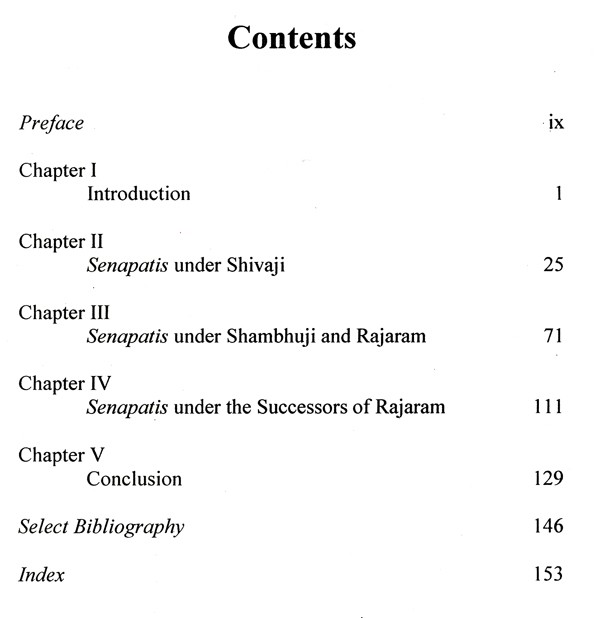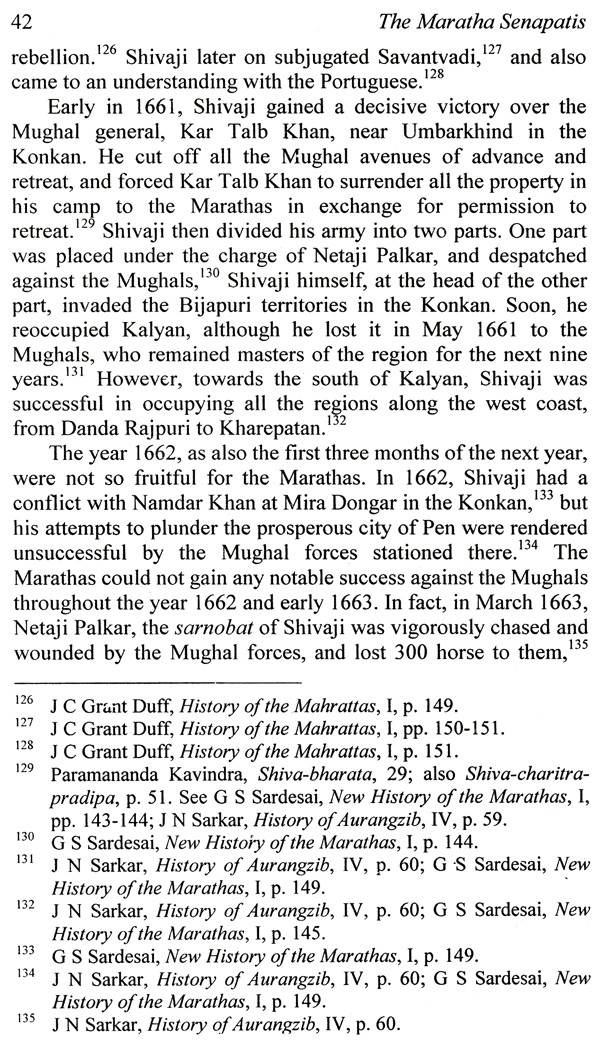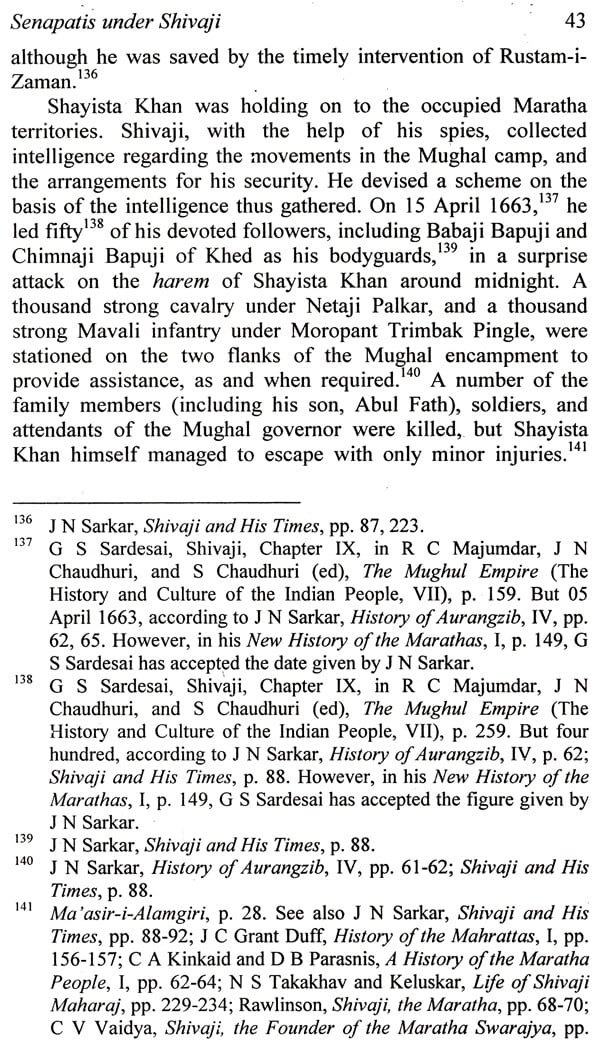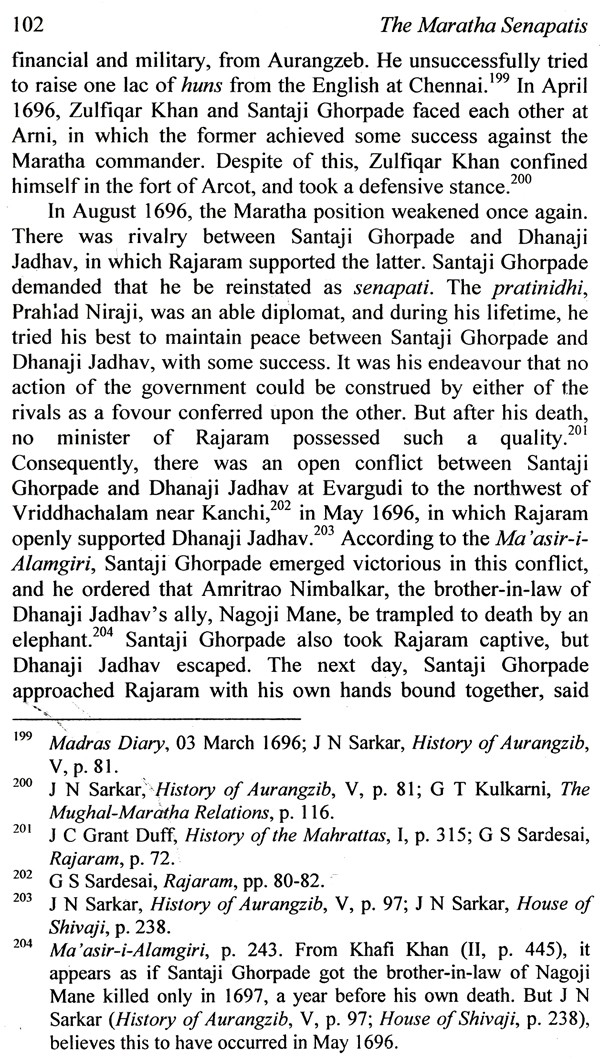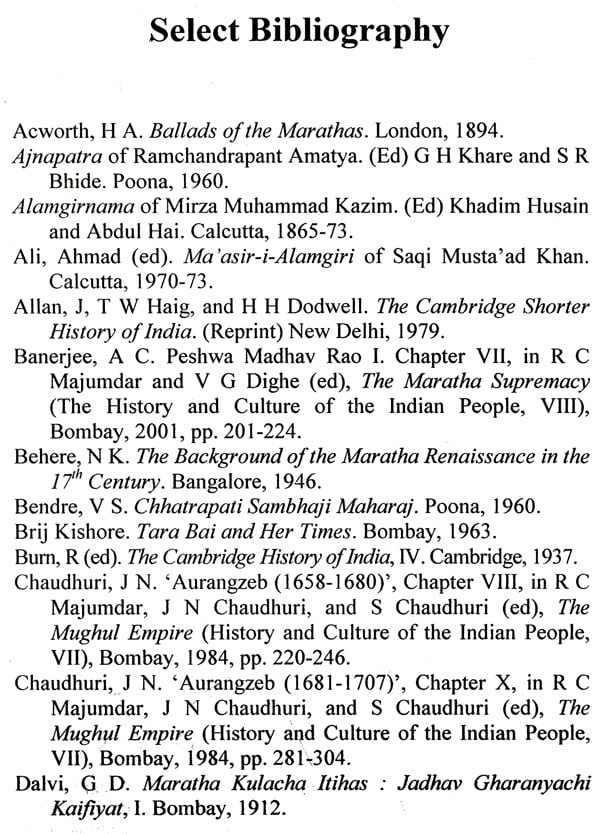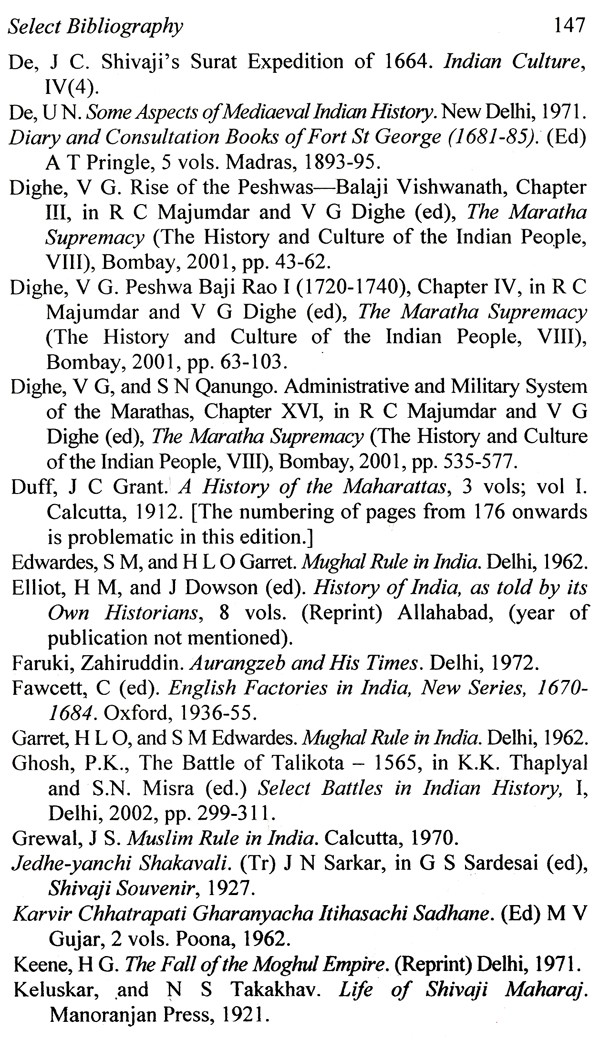
The Maratha Senapatis
Book Specification
| Item Code: | AZH224 |
| Author: | Nidhi Srivastava |
| Publisher: | Agam Kala Prakashan, Delhi |
| Language: | ENGLISH |
| Edition: | 2011 |
| ISBN: | 9788173201172 |
| Pages: | 164 |
| Cover: | HARDCOVER |
| Other Details | 9.00X6.00 INCHES |
| Weight | 364 gm |
Book Description
The Marathas, an almost unknown political entity in the first half of the seventeenth century AD, suddenly rose to prominence under their great leader, Shivaji, around the middle of that century. But within less than two centuries of its establishment, the Maratha empire fell after offering a brief resistance of just fifteen weeks. In its infancy, the Maratha state was a monarchy, governed by an enlightened aristocracy. Shivaji knew of the evils of the 'feudal structure', the term, in the context of the Marathas, been used in the sense of the granting of land (jaghir) to high officials in lieu of salaries, and hereditary appointments to such posts. He was not in favour of granting land to his high officials in lieu of salary; also, he did not favour hereditary appointments.
Dr Nidhi Srivastava got her Master of Arts degree in Mediaeval and Modern Indian History of the University of Lucknow in first division in 1993. Her work on the career and personality of Santaji Ghorpade, the senapati of the Maratha king, Rajaram, won her the degree of Doctor of Philosophy in Mediaeval and Modern Indian History of the University of Lucknow, and the acclaim of her learned examiners, in 2003.
The Marathas, an almost unknown political entity in the first half of the seventeenth century AD, suddenly rose to prominence under their great leader, Shivaji, around the middle of that century, and by the second decade of the eighteenth century, the Mughal emperor had granted them the right to realize chauth and sardeshmukhi of the six provinces of southern India, thus recognizing their de facto supremacy in the Deccan. Soon, the Maratha armies were active 'from Lahore to Murshidabad, from Delhi to Seringapatam'. But within less than two centuries of its establishment, the Maratha empire fell after offering a brief resistance of just fifteen weeks.
**Contents and Sample Pages**

